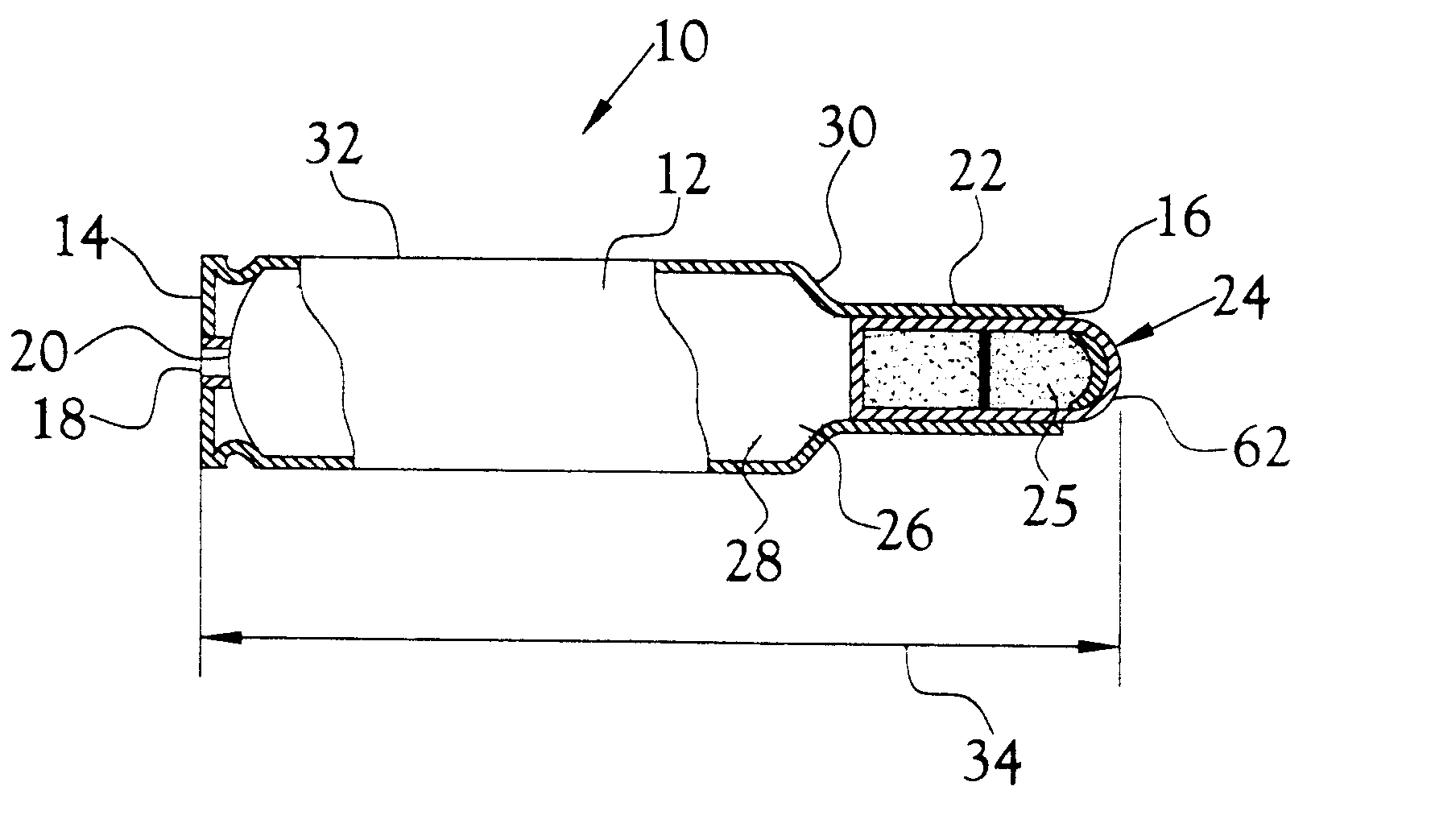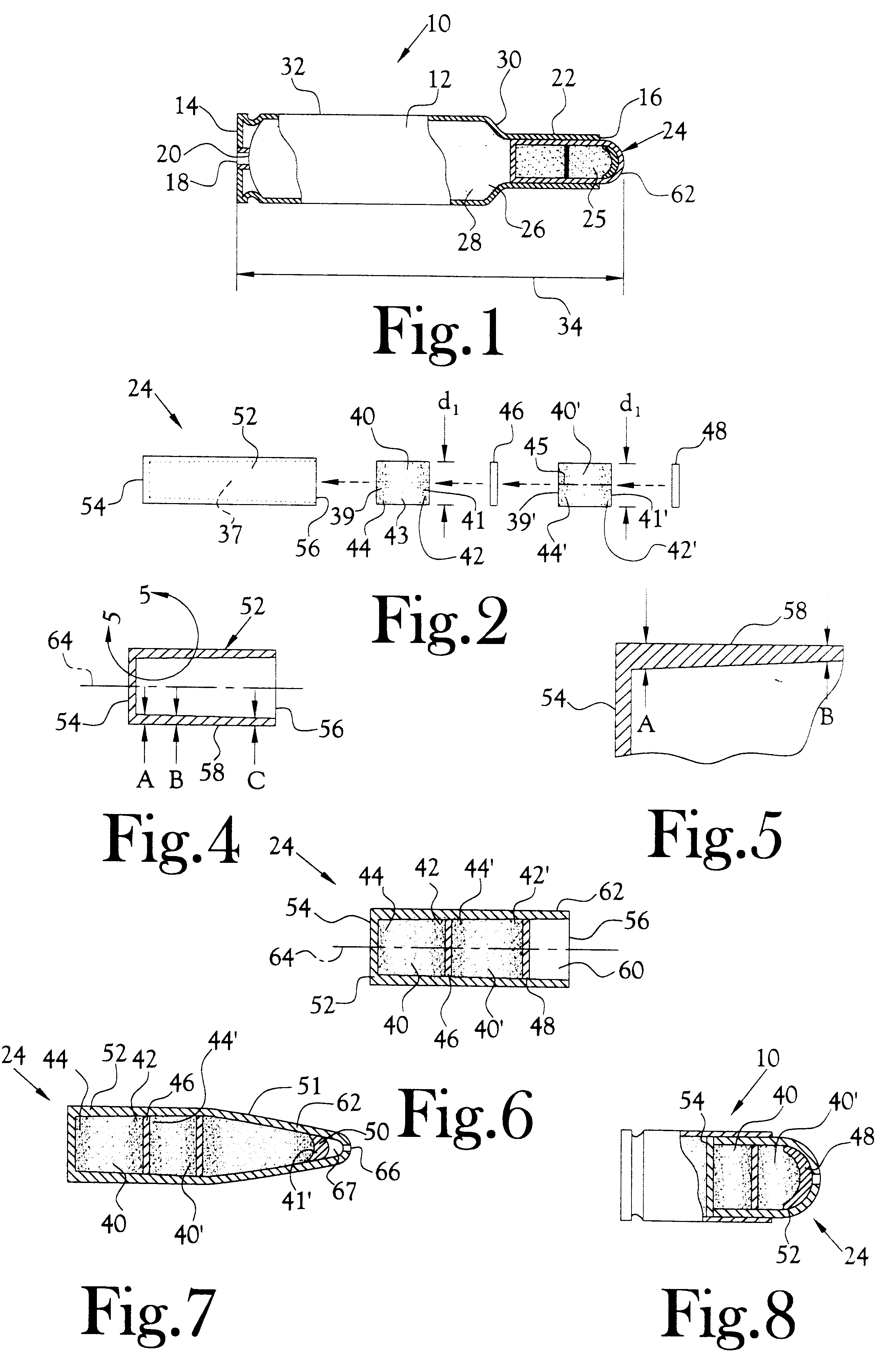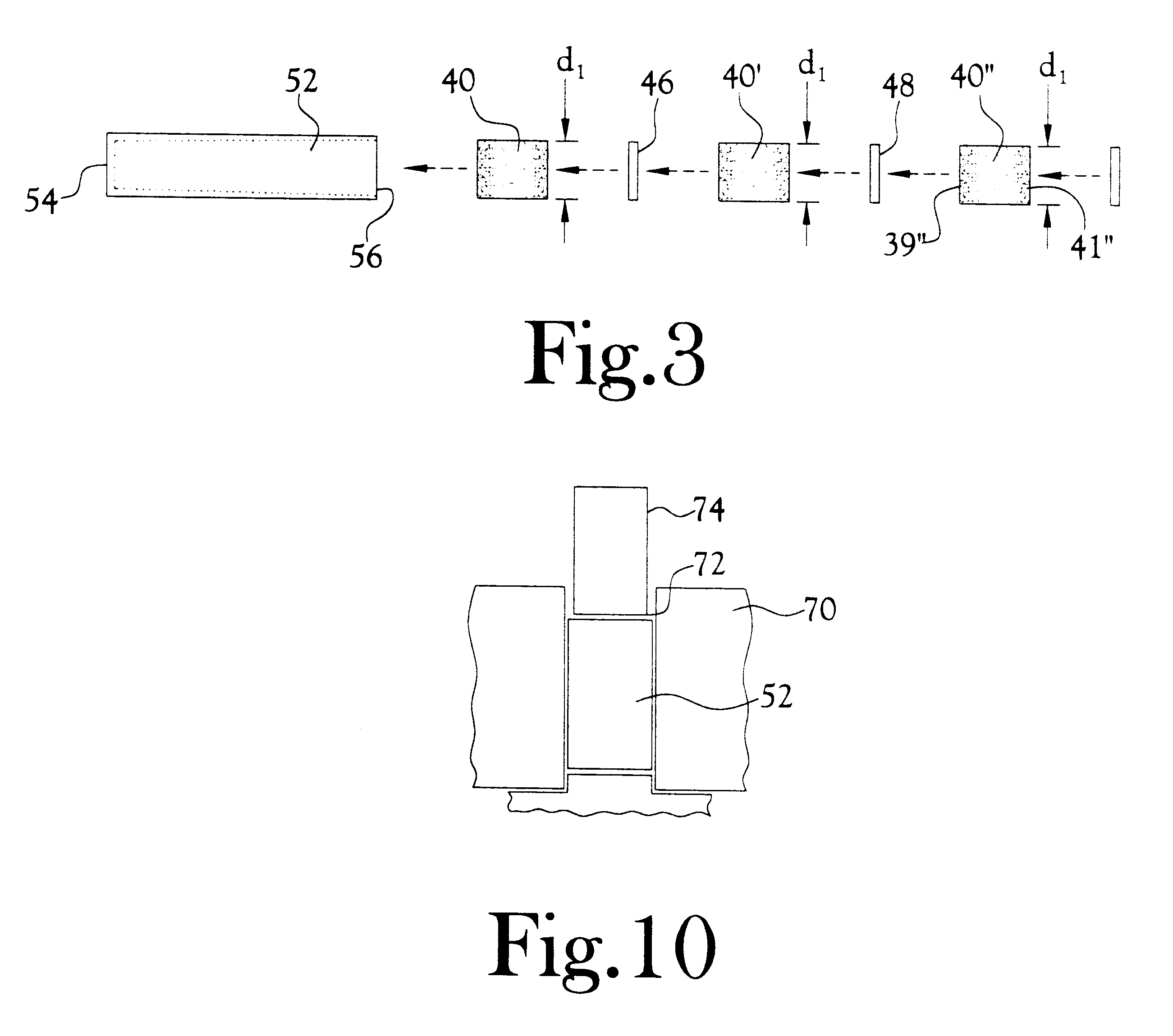Method for the manufacture of a multi-part projectile for gun ammunition and product produced thereby
- Summary
- Abstract
- Description
- Claims
- Application Information
AI Technical Summary
Benefits of technology
Problems solved by technology
Method used
Image
Examples
example i
Sixty-two grain projectiles having a 12 ogive leading end, were fabricated from two compacts plus a separator disc in the leading end thereof. The compacts and disc were pressed into a jacket of 0.72 inch length. Each compact was formed from a mixture of 70%, by weight, tungsten powder and 30%, by weight, tin powder. Typical lengths and diameters of these compacts are given in Table I. Each compact was pressed in a die cavity into a cylindrical compact employing an axially applied pressure of about 20,000 psi. The projectiles were incorporated into rounds of 5.56 mm ammunition employing standard cases containing 21.2 grains of VihtaVuori 550 gun powder. These rounds were fired from a standard M-16 military rifle having a 14.5 inch long barrel that included 7 twist rifling. The projectiles exited the muzzle of the weapon at a velocity of between about 1900 and 2000 fps. In one test, these projectiles were fired against the metal walls of a "live fire house" of the type employed in mi...
example ii
Seventy-six grain projectiles produced from 2 compacts and a separator disc disposed in a 0.8 inch long jacket and in substantially the same manner as the projectiles of Example I were incorporated into a standard 5.56 mm case employing 20.0 grains of VihtaVuori 550 gun powder and fired from the same weapons as the sixty-two grain projectiles of Example I and under substantially the same circumstances. The performance and terminal ballistics of these projectiles were substantially the same as those of the sixty-two grain projectiles of Example I.
example iii
Projectiles of 87 grains weight were produced in accordance with the present method and employing two compacts and a separator disc. A powder mixture of 83%, by weight of tungsten powder and 17%, by weight of tin powder was pressed in a die to produce the two compacts. Each projectile included an 12 ogive at its leading end and a 7.5 degree boat tail at its trailing end. The projectiles were incorporated into standard 5.56 mm cases employing 24.7 grains of VihtaVuori 550 gun powder. These rounds were fired from a standard M-16 military rifle, some firings employing a 26" long barrel, some a 20" long barrel, and some a 14.5 inch long barrel. The projectiles fired from the 26" barrel had a muzzle velocity of about 2950 fps. Those projectiles fired from the 20" barrel had muzzle velocity of about 2600 fps and those fired from the 14.5" barrel had a muzzle velocity of about 2300 fps. At 600 yards those projectiles fired from the 26" barrel fully penetrated a 1 / 8" thick cold rolled steel...
PUM
| Property | Measurement | Unit |
|---|---|---|
| Weight | aaaaa | aaaaa |
| Weight | aaaaa | aaaaa |
| Pressure | aaaaa | aaaaa |
Abstract
Description
Claims
Application Information
 Login to View More
Login to View More - R&D
- Intellectual Property
- Life Sciences
- Materials
- Tech Scout
- Unparalleled Data Quality
- Higher Quality Content
- 60% Fewer Hallucinations
Browse by: Latest US Patents, China's latest patents, Technical Efficacy Thesaurus, Application Domain, Technology Topic, Popular Technical Reports.
© 2025 PatSnap. All rights reserved.Legal|Privacy policy|Modern Slavery Act Transparency Statement|Sitemap|About US| Contact US: help@patsnap.com



